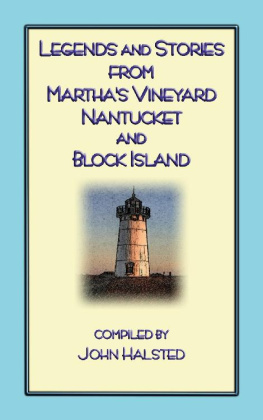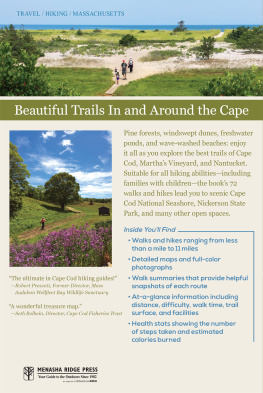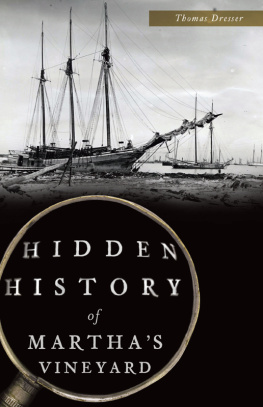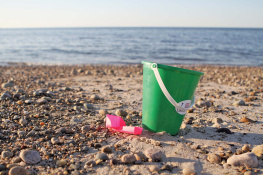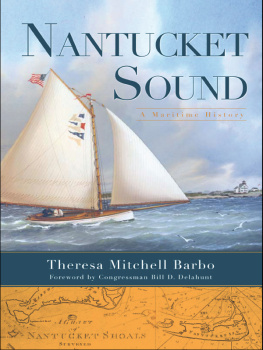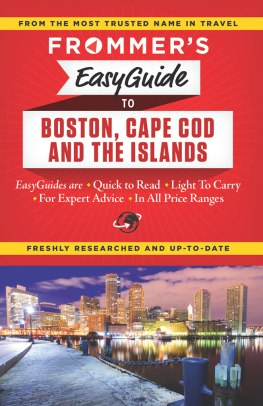Legends & Stories
from
Martha's Vineyard, Nantucket
&
Block Island
Compiled by
John Halsted
With excerpts from
Myths and Legends of Our Own Land
by Charles M. Skinner [1896]
and from
MARTHA'S VINEYARD
by Henry Franklin Norton [1923]
as well as other sources.
Legends & Stories From Martha's Vineyard
Typographical arrangement of this edition
Abela Publishing 2014
This book may not be reproduced in its current format in any manner in any media, or transmitted by any means whatsoever, electronic, electrostatic, magnetic tape, or mechanical ( including photocopy, file or video recording, internet web sites, blogs, wikis, or any other information storage and retrieval system) except as permitted by law without the prior written permission of the publisher.
Abela Publishing
London
United Kingdom
2014
ISBN-13: 978-1-909302-90-7
email:
website:
http://www.AbelaPublishing.com.
Frontispiece
The Edgartown Lighthouse
CONTENTS
The May-Flower Compact
Martha's Vineyard And Nantucket
Introduction
Love And Treason
The Headless Skeleton Of Swamptown
The Crow And Cat Of Hopkinshill
The Old Stone Mill
The Origin Of A Name
Micah Rood Apples
A Dinner And Its Consequences
The New Haven Storm Ship
The Windam Frogs
The Lamb Of Sacrifice
Moodus Noises
Haddam Enchantments
Block Island
Introduction
The Buccaneer
Robert Lockwood's Fate
Love And Rum
The Whole History Of Grandfather's Chair
Chapter I
Chapter II
The Lady Arbella
Chapter III
The Red Cross
Chapter IV
Chapter V
The Loyalists Of Massachusetts
Punishment For Wearing Long Hair In New
England
School Discipline In The State Of
M assachusetts
The Schoolmaster's Soliloquy
The Story Of King Philip
I. Philip's People
II. Philip's Childhood Home
III. Massasoit And His Two Sons
IV. Philip Hears Of The English
V. Philip Meets The English
VI. Philip's Education
VII. Philip's Daily Life
VIII. Philip's Relations With The English
IX. Philip Becomes Grand Sachem
X. Philip's Troubles With The Whites
XI. Philip And The Indian Councils
XII. King Philip's War
XIII. The Last Days Of Philip
A Facsimile Of The Treaty Made At
Taunton
THE MAY-FLOWER COMPACT
In ye name of God, Amen. We whose names are underwriten, the loyall subjects of our dread soveraigne Lord, King James, by ye grace of God, of Great Britaine, Franc, & Ireland king, defender of ye faith, &c., haveing under taken, for ye glorie of God, and advancemente of ye Christian faith, and honour of our king & countrie, a voyage to plant ye first colonie in ye Northerne parts of Virginia, doe by these presents solemnly & mutualy in ye presence of God, and one of another, covenant & combine our selves together into a civill body politick, for our better ordering & preservation & furtherance of ye ends aforesaid: and by vertue hearof to enacte, constitute, and frame such just & equall lawes, ordinances, actes, constitutions, & offices, from time to time, as shall be thought most meete & convenient for ye generall good of ye Colonie, unto which we promise all due submission and obedience. In witnes wherof we have here under subscribed our names at Cape-Codd ye 11. of November, in ye year of ye raigne of our soveraigne lord, King James, of England, France, & Ireland ye eighteenth, and of Scotland ye fiftie fourth. Ano. Dom. 1620.
MARTHA'S VINEYARD
AND
NANTUCKET
Introduction
An excerpt from
MARTHA'S VINEYARD by Henry Franklin Norton, 1923.
MARTHA'S VINEYARD, called "Noepe" by the Indians, which means in their picturesque language "In the Midst of the Sea," is the largest island on the southeastern coast of Massachusetts. It is twenty miles long and nine miles wide and but a few feet above the sea level in the eastern part, which is known as the Plains, one of the largest tracts of level ground in New England. However, the land gradually rises to an elevation of over three hundred feet above the sea level at Peaked Hill in Chilmark, not Indian Hill as believed by many summer visitors.
Martha's Vineyard, with Chappaquiddick, No-Man's
Land, and the Elizabeth Islands comprise the County of Dukes County, which was incorporated November 1, 1668. The county was named for the Duke of York by the first governor, Thomas Mayhew, who was hoping thereby to gain royal favor. There are six towns on Martha's Vineyard. Edgartown on the east, named for Edgar, son of James II, who bore the title of Duke of Cambridge; Oak Bluffs on the northeast, named for its location and oak trees; Tisbury for the Mayhew Parish in England; later the village post-office was named Vineyard Haven because of its location; West Tisbury; Chilmark, for the English Parish of Governor Mayhew's wife, and Gay Head on the west, named for its wonderful cliffs of different colored clay.
DISCOVERED BY NORTHMEN IN A. D. 1000
The first Europeans that visited Martha's Vineyard were the Northmen, or Vikings, who landed about the year 1000AD, naming it Vineland. In some of their writings have been found descriptions that can be of no other place than Martha's Vineyard.
Another discoverer of this island was Verrazano, an Italian explorer, who first sighted the western extremity in 1524, and called it Claudia, in honor of the mother of Francis II of France.
The next explorer, and the first one to leave any account of the island, was Bartholomew Gosnold, of Falmouth, England. In 1602AD he sailed for Virginia. Contrary winds drove him to the Azores; thence he sailed a little north of west, and struck out boldly

The Famous Cliffs at Gay Head
across the Atlantic. He was the first Englishman to sail directly to the American coast, thereby saving nearly a thousand miles in distance and at least a week in sailing time. He landed on a cape which he named Cape Cod from the abundance of codfish found there. Then doubling the cape and sailing to the southward he landed on a small island about six miles southeast of Gay Head. He called this small island Martha's Vineyard. The next day he landed on the larger island. After exploring it and finding it so large, well wooded, and with such luxuriant grape vines, many beautiful lakes, and springs of the purest water, he transferred the name and called it Martha's Vineyard, in honor of his mother whose name was Martha. The other island he named No-Man's-Land.
GOSNOLD BUILDS FIRST HOUSE AND FORT IN NEW ENGLAND
Soon after Gosnold explored the group of islands to the northwest of the Vineyard, naming them the Elizabeth Islands in honor of Queen Elizabeth who was still reigning. There are eight islands in this group, named as follows: Naushon, Nonamesset, Uncatena, Wepecket, Nashawena, Pasque, Cuttyhunk, and Penekese. On May 28, 1602, Gosnold founded a colony on Cuttyhunk. Here he built the first house and fort erected in New England, intending to leave a colony there, but when he had loaded a cargo of sassafras root and cedar logs, the settlers were determined to return with him because they were afraid of the Indians.
Next page
